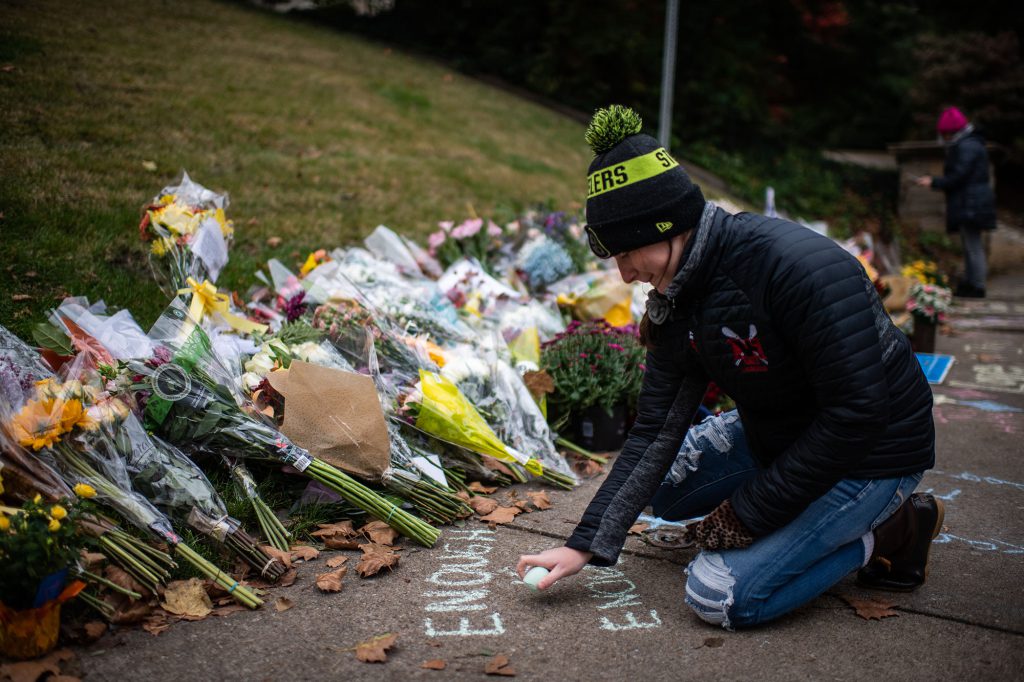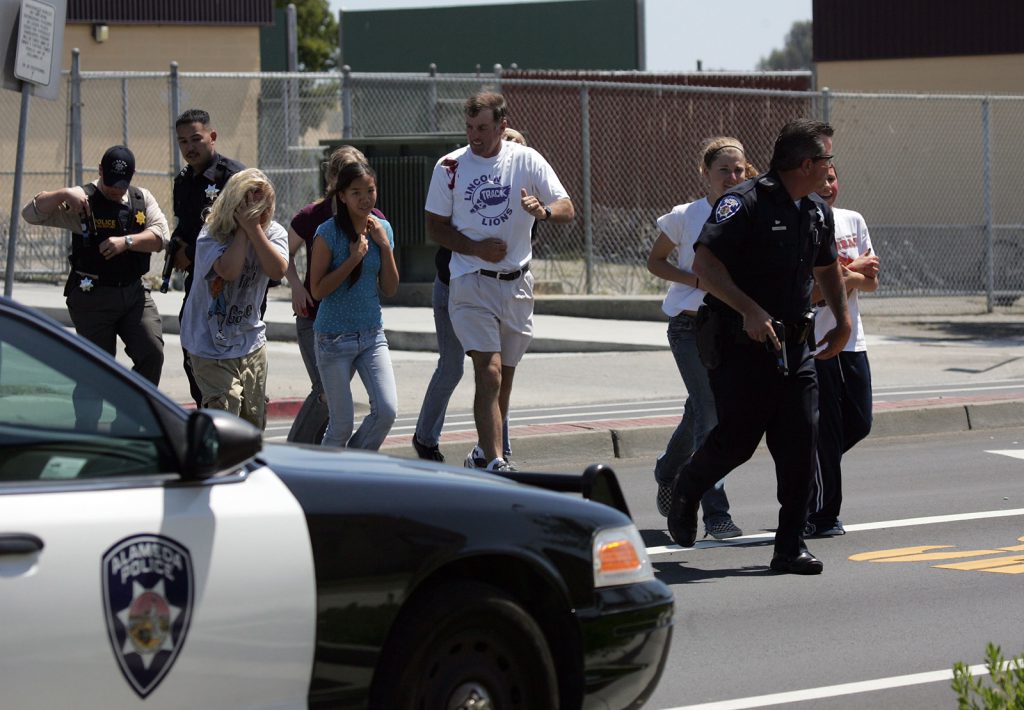Issuing Trigger Warnings in an Age of Mass Shootings

On the last Monday in October of this year, still reeling from the previous week’s episodes of hate-based gun violence, I dreaded stepping into my classroom, knowing the conversation that lay ahead. Just a few days before, on Wednesday, October 24, two Jeffersontown, Kentucky, residents were shot in cold blood at a Kroger supermarket; the shooter had tried first to enter a predominantly black church, but failed. On Saturday, October 27, 11 people perished in a mass shooting at the Tree of Life Synagogue in Pittsburgh, Pennsylvania. The shooting suspect in the Kroger incident, in which a black man and a black woman were killed, has been charged with committing hate crimes, while hate crime charges have also been filed against the suspected gunman in the synagogue shooting.
Hate-based violence is not new, but now hatred is outfitted in weapons of lethal sophistication: rapid-fire racism, semiautomatic anti-Semitism, deadly discrimination at one’s fingertips. The United States can boast of ranking number one in the world in terms of the number of public mass shootings. By this measure, we are indeed “America First.”
This new era of active shooters and mass shootings has me pondering the meaning of “trigger warning” and despairing at how the term might be best used today.
A “trigger warning” is traditionally taken to mean a statement made in anticipation that a participant, listener, or reader who has previously experienced trauma might encounter something distressing. The statements are designed to minimize the potential for re-traumatization, harm, or discomfort. Trigger warnings have become popular in the classrooms of colleges and universities before lectures or films that contain content ranging from gun violence, to rape, to police brutality, to suicide. Through forewarning, a student can prepare mentally for challenging content and practice self-care.
Flip on the radio, turn on the television, or open a newspaper, and there surely you will find some version of: Warning: The following story contains accounts some people may find disturbing. Institutions of higher education have implemented trigger warnings as part of a broader effort to create “safe spaces,” or places where people can be themselves without fear.
People in schools, places of worship, and supermarkets should all expect to go about their day without worrying about gunfire—but the truth is that they can’t. Trigger warnings are supposed to make us feel safe; instead, they remind us of just how unsafe we are. No matter how much we seem to warn, actual triggers continue to kill unimpeded.
That Monday after the Kroger and Tree of Life shootings, I entered my classroom at Centre College in Danville, Kentucky, (only about an hour and a half from where the Kroger shooting took place) to teach a lesson on sexism and racism in popular culture. Before I got started, I felt like I needed to make a statement. “I know the world is much bigger than our classroom,” I said, “and I want those who were impacted by the events of last week to know that I support you.” And then came tears. I didn’t expect to cry, but I couldn’t hold back. The previous week’s violence was too senseless, the response too tepid, the possibility it would happen again too likely. My students looked on with varying responses. Some teared up. Others looked surprised but supportive. Class went on.
Schools in the U.S. have become like conflict zones. In other countries, mass shootings tend to happen near military establishments; in the United States, people are more likely to die at work or school. Technologies are keeping pace: backpacks that double as bulletproof protection, bullet-resistant blankets to pull down over classroom doors, and pepper spray flashlights, among other examples.
While it’s true that mass shootings account for just a small percentage of the country’s gun deaths—this year, 329 of 13,740 as of mid-December (excludes gun suicides)—that doesn’t reduce the absurdity of the number. It should be zero. With each loss of life to senseless gun violence, the United States hemorrhages decency.
These days, “trigger warning” seems to more aptly describe a just-in-time warning put out to those in the vicinity of a mass shooting to shelter in place as the bullets fly. Schools like my own now have special locks on classroom doors, as well as mass notification systems via email and text messaging to warn of active shooters. Occasionally colleges and universities circulate videos of “helpful” tutorials on what to do when looking down the barrel of a gun. Active shooter drills have become part of the curriculum. “Run, hide, fight” has replaced “stop, drop, and roll” as the most often repeated school safety mantra. Being fired on has displaced being on fire as a top security concern.
The traditional meaning of “trigger warning” now seems innocent and naïve: a reminder of a time when colleges and universities thought it only necessary to shield their students from the violence of words and images. At times, I feel almost guilty warning my students of troubling content. Where were the warnings for those who were gunned down by an active shooter’s raging hatred?
Part of me fears that it has become impossible to guard against the reality of rampant gun violence. Trigger warnings seem akin to putting a Band-Aid on a shotgun wound—a wound that only has a few days to clot before it is reopened. The other part of me resolves to double down on trigger warnings, to lighten the load on the minds of students already overburdened with what is our very scary new normal. And so I warn, tirelessly and tearfully, hoping to at least finish the thought before the country is given another reason to mourn.
Even as I was contemplating this very essay and drafting it in early November, headlines broke that a gunman entered a Tallahassee, Florida, yoga studio and murdered two, injured five, and then killed himself. Five days later, another gunman entered a bar filled with young college students in Thousand Oaks, California, leaving 12 people dead. Following my initial submission of this piece, news broke of three separate shootings—in Chicago, Denver, and St. Louis—that left five dead. As we all know too well, those headlines won’t be the last.


































